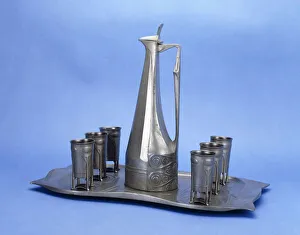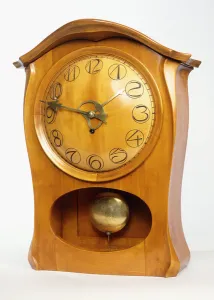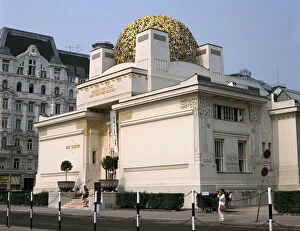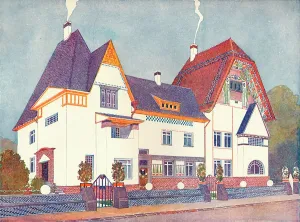Josef Maria Olbrich Collection
Josef Maria Olbrich, a prominent figure in the Art Nouveau movement, left an indelible mark on Vienna's architectural and design landscape
All Professionally Made to Order for Quick Shipping
Josef Maria Olbrich, a prominent figure in the Art Nouveau movement, left an indelible mark on Vienna's architectural and design landscape. Born in 1867, Olbrich was a multifaceted artist known for his innovative creations. One of his notable works is the Panel Dress or Furnishing Fabric from 1901. This exquisite piece showcases Olbrich's mastery of intricate patterns and attention to detail. Its delicate motifs reflect the elegance and sophistication of the era. Olbrich's talent extended beyond textiles. The Edelzinn eight-piece pewter liquor set he designed in 1865 exemplifies his skill in metalwork. With its sleek lines and refined craftsmanship, this set epitomizes the fusion of functionality and artistic expression that defined Art Nouveau. In addition to decorative objects, Olbrich also ventured into furniture design. His mantel clock from 1899 stands as a testament to his ability to blend different materials seamlessly. Crafted with mahogany, fruitwood, and brass elements, this timepiece exudes timeless beauty. Olbrich's architectural prowess is evident in iconic structures like the Secession Building in Vienna (1897). This masterpiece became synonymous with Viennese Jugendstil architecture due to its unique golden dome adorned with laurel leaves—a symbol of triumph over traditional styles. Another remarkable project by Olbrich is Karlsplatz Station (2015), which showcases his visionary approach towards urban planning. Collaborating with Alan John Ainsworth on several projects such as Wiener Secessionsgebaude (2014-2017) and Karlsplatz Stadtbahn Station (2014-2017), they breathed new life into these historical landmarks while preserving their original essence. Not limited to Austria alone, Olbrich made significant contributions abroad too. The House at Darmstadt (1901-1902) designed by him reflects his architectural genius.












